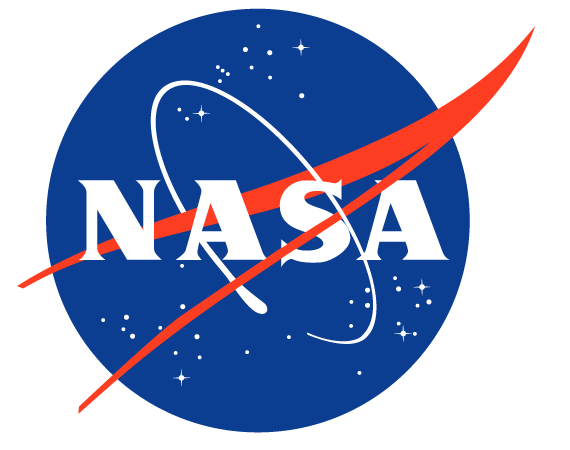Events
Metamaterial Films for In-Space Propulsion by Radiation Pressure
7-9 October 2018
Washington, DC
Hosts:
Grover Swartzlander, Rochester Institute of Technology
Les Johnson, NASA Marshall Space Flight Center
Nelson Tabiryan, BeamCo, Orlando Florida
Read more about this meeting: Day 1 and Day 2
View the agenda here (PDF)
Overview & Goals
Advanced photonic materials including metamaterials provide new opportunities to navigate space by means of radiation pressure. This Incubator seeks to bring together experts in the areas of diffractive metamaterials, radiation pressure, and astronautics to advance the development of in-space sailcraft propulsion, navigation, and control.
By bringing together three separate communities (space, materials, and opto-mechanics) the goal of the program is to showcase promising new research and technology while building enthusiasm around and establishing a path toward solar or laser-driven sailcraft using passive or active films based on engineered transmissive or reflective metamaterials. The conclusions of this meeting will be distributed to the participants in the form of a White Paper identifying technology opportunities and a roadmap for the development of metamaterial sails.
Scope and Featured Topics:
The Incubator program will explore these topic areas:
-
Radiation Pressure on a Solar or Laser-Driven Sailcraft. What are the future space missions driving the need for light-sails? What are the comparative advantages/disadvantages of diffractive sails over reflective sails? Can electro-optically controlled light pressure provide agile and low mass alternatives to mechanical navigation and control?
-
Sailcraft Missions. What advantages do photonic sails afford over other propulsion methods for Earth-orbiting, interplanetary, and interstellar trajectories? Can a space demonstration mission be tested within five years (e.g., using a CubeSat or the International Space Station)?
-
Space Environment Requirements. Which materials provide low mass density, tear resistance, heating/cooling robustness, ultraviolet durability, and launch/deployment survivability? Which fabrication techniques will afford large are diffractive sails (e.g., 1 square kilometer)?
-
Metamaterial films. Non-absorbing and low mass density metamaterials are particularly desirable for sailcraft films, and thus, all-dielectric composites such as oriented liquid crystal or structured dielectric thin films are of most interest. Broadband spectral performance is desired for solar propulsion whereas a narrow band film may be suitable for a laser-driven sail. Active (e.g., electro-optic switchable) metafilms are of high interest, though passive films may also be useful. Are suitable metamaterials currently available, and if not, which key enabling technologies are needed?
Background
The abundant untapped momentum of solar photons is becoming increasingly attractive as a means to propel spacecraft with an attached solar sail. Like the early days of the Wright brothers, this is the dawn of the Age of Sailcraft. Today’s sails are primitive structures, comprised of inefficient reflective constructions that required complex attitude adjustments for orbital maneuvers. Today’s reflective sails are akin to ancient Egyptian spinnakers rather than optimized vessels seen in the America’s Cup. However, the triple coincident emergences of fledgling solar sailcraft demonstration missions, the national urgency to develop CubeSat technology, and the development of broadband high efficiency electro-optically controlled diffractive thin films, provides an opportunity to replace reflective sails with potentially superior performing diffractive sails. The transformative basis of this new sailcraft architecture is evident in optical, mechanical, and electro-optical advantages afforded by modern metafilms known as actively controlled zero diffraction order gratings. This class of engineered metamaterial structures has revolutionized laser and photonic systems and are now well poised to be applied to advanced in-space propulsion systems based on solar or laser radiation pressure.
An important objective is to enable effective low-cost, low-risk sailcraft for orbit raising/lowering of both earth-orbiting and inter-planetary satellites, providing an enduring benefit to society in terms of the emerging space economy. The latter includes constellations of satellites that provide continuous high-resolution hyperspectral images of critical regions of the Earth, e.g., agricultural districts, flood areas, human migration zones, and polar regions. The latter is an attractive navigational benefit of sailcrafts since they allow non-Keplarian orbits that are inaccessible to conventional satellites. Decades of mission studies have examined how microscopically thin films ranging from meters to kilometers in extent can make use of freely available sunlight for near-Earth, interplanetary, and interstellar space travel. In nearly all cases a reflective metallic coating was considered as the mechanism for transferring momentum from photons to the sail. Metamaterial films provide an alternative and advantages not afforded by reflective films.
Meeting Sponsors

